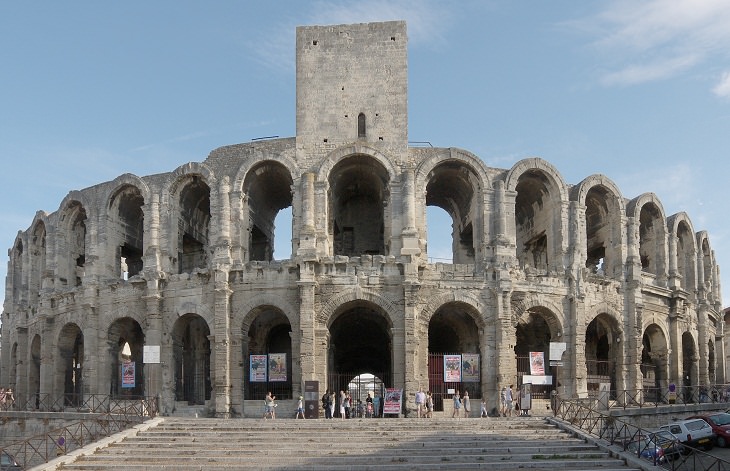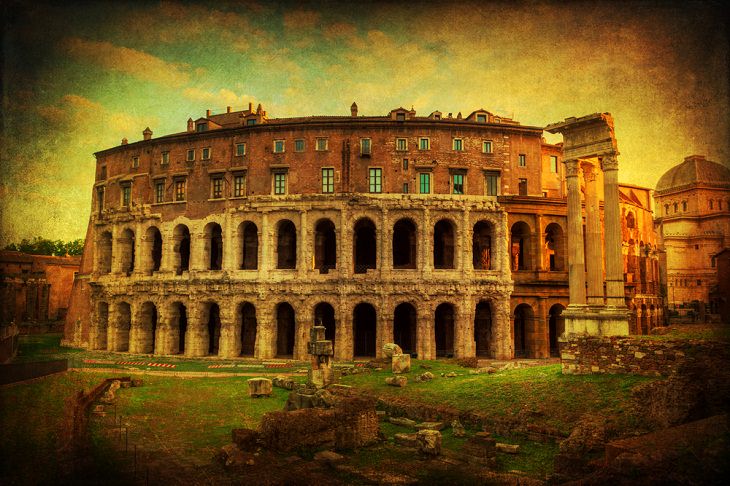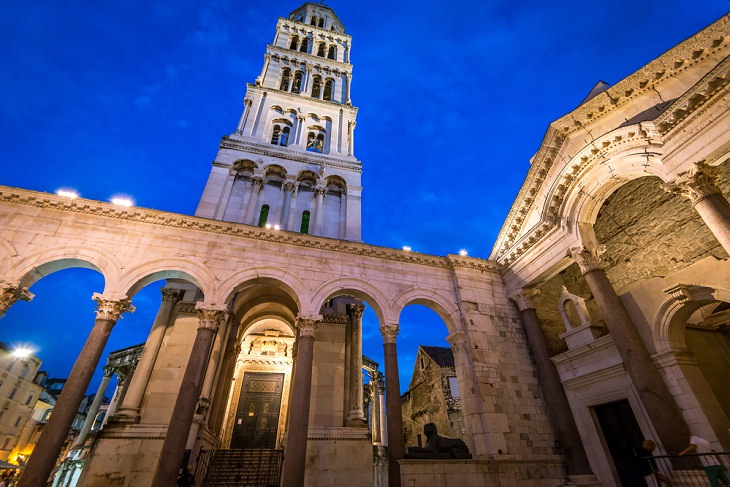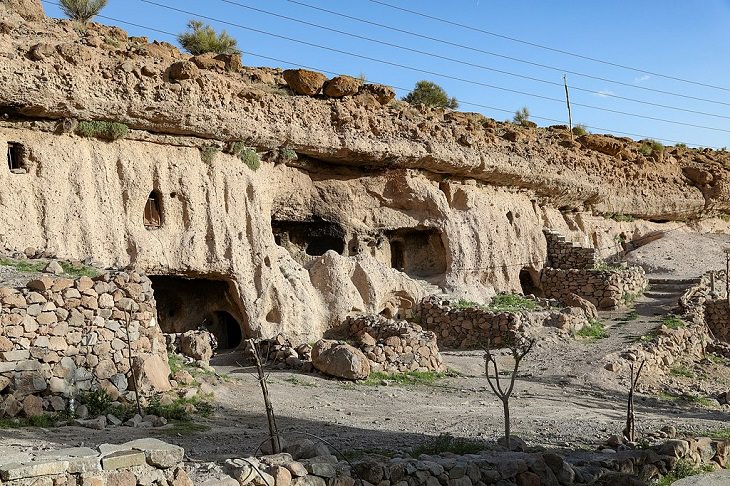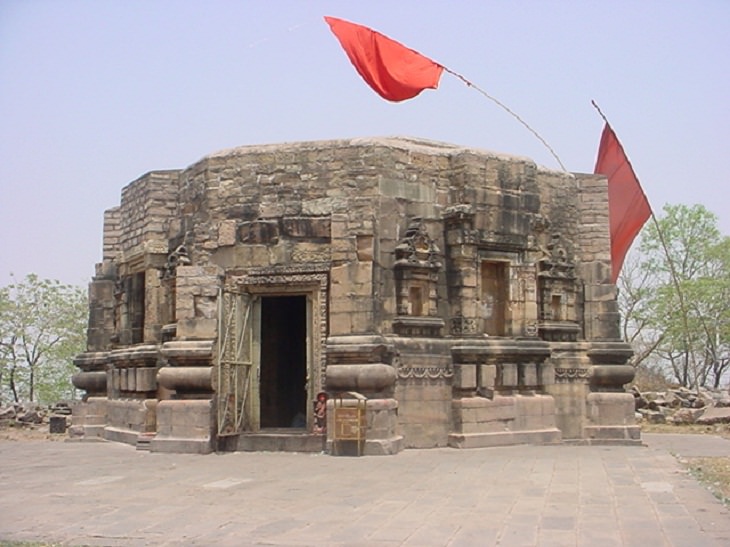When we talk of ancient structures or buildings, we immediately think of the Great Pyramid of Giza, the tower of Jericho, or the Colosseum. However, there are plenty of other amazing ancient constructions that are still in use today. These age-old structures have managed to survive through centuries and yet have retained their magnificence even today. They don’t just serve as reminders of a fascinating past but also tell us about the remarkable engineering feats of that time.
Let’s now explore some of these wonderful ancient superstructures that have survived the test of time.
1. Tower of Hercules Lighthouse, Spain
Known as the oldest functioning lighthouse in the world, the Tower of Hercules is possibly one of the most well-preserved structures from the classical Roman age. According to legend, this was the precise spot where Hercules slew the giant Geryon.
Originally known as the “Farum Brigantium” or “Brigantia Lighthouse”, the structure was constructed way back around the 2nd century. However, it is so well-preserved it appears as if the tower might have been built just a few decades back. The building stands at the entrance of La Coruña harbor in north-western Spain where it has served as a lighthouse and a precious landmark for centuries now. At the base of the lighthouse, there’s a Latin inscription carved on a preserved rock that says the building is the work of an architect called Gaius Sevius Lupus and that the tower is dedicated to the god Mars.
The Tower of Hercules stands 55 meters (180 feet) tall and was renovated in the 18th century once.
2. Arles Amphitheatre, France
This ancient Roman amphitheater was built in 90 A.D. and is located in the southern French city of Arles. The Arles Amphitheatre (known in French as Les Arènes d'Arles) is the perfect example of Roman architecture and is said to be inspired by the renowned Coliseum in Rome.
During the height of the Roman empire, the town of Arles was a thriving and bustling city. The amphitheater was built in the city to seat 20,000 people and became an important landmark for the townsfolk. The structure has over 120 arches, along with many galleries and staircases, and two levels of seating. The amphitheater served as a platform to host a variety of spectacles such as gladiatorial battles, chariot races, executions, and animal combats for over four centuries. Cultural entertainment, like plays and orations, also took place here.
The amphitheater was converted into a fortress after the fall of the Roman empire in the 5th century and was soon encircled with houses, churches, and a town square. Then, in the 19th century, the amphitheater was restored to its original state and was even painted by Vincent Van Gogh. Today, several plays and concerts are held at the venue and it is also used for traditional bullfighting.
3. Theater of Marcellus, Rome
Completed in 13 B.C., the theater of Marcellus was once the largest and most important theater in Rome. The construction of the building started during the reign of emperor Julius Caesar and was finished by Augustus Caesar. It was an imposing building - 33 m (108 feet) high, 130 m (427 feet) - and was dedicated in the name of Augustus’s nephew, Marcus Claudius Marcellus (42–23 BC).
The theater had the capacity to hold up to 20,500 people and was frequently host to several acts of pantomime, poetry and music recitals, and plays. Historians say that the space of the theater was also used by Caesar to often address the city population as a whole.
In later years, the theater of Marcellus suffered and materials from the structure were used in constructing other building projects. Then, during the 11th and 12th centuries A.D., the theater was converted into a fortress by the Pierleone family. More alterations were done to the building by the wealthy Orsini family in 1712 and the theater is now known as the Palazzo Orsini. However, the structure still includes two tiers of the 12 original arches of the theater.
4. Diocletian’s Palace, Croatia
Diocletian's Palace in Split is one of Croatia's top sights and is also a UNESCO World Heritage Site. It was built in 305 A.D. by the Roman emperor Diocletian who, after 21 years of being in power, decided to lead a retired life and settled in Split, Croatia. The building was his place of retirement where he spent almost 10 years of his life. Its unique architectural style - half Greek and half Byzantine – has fascinated people for centuries and the large and well-preserved palace continues to leave people in awe even today.
Spread over an area of 7 acres (3 hectares), there are massive walls on all sides of the palace along with 16 towers (of which 3 remain) and 4 gates. There was even a 24-foot-wide (7.3 m) arcaded magnificent gallery inside that was used for the display of art and was open to scenic views of the sea. While the emperor spent his time relaxing in his luxurious quarters, the palace also had barracks for a substantial armed force to protect him.
After the death of Diocletian, the palace was badly damaged when the Slavic people invaded the area in the 7th century. Before long, the place and its surrounding area became a sanctuary to the nearby ruined city of Solin. New constructions started unfolding around the palace and soon the old town of Split was built almost completely within the walls of the Roman emperor’s home.
Much of the original palace still survives and continues to be an inspiration for numerous architects and painters.
5. Maymand Caves, Iran
The village of Maymand is situated near Shahr-e Babak in Iran and is thought to have been established around 12,000 years ago. The place is famous for the inhabited in-ground cave dwellings that date back 3-4,000 years and initially began as religious sites. However, they slowly evolved into permanent houses as settlers decided to make it their home for long periods.
According to the locals here, their ancestors used some form of hard, sharpened stone that is found in the area to carve out the simple cave homes. These single-room dwellings are stacked atop one another in steps up the side of a slope. Amazingly, each of these caves contains a single room with space for a central stove.
Today 300 caves exist in the village and are still inhabited for housing and shelter by many locals who are primarily semi-nomadic shepherds. The incredible cave-dwellings may not look fancy but they are remarkable structures that have stood for thousands of years and are also believed to be able to cope with the harshest of climate.
6. Mundeshwari Temple, India
The Mundeshwari Temple at Kaura in India is regarded as the oldest functional Hindu temple in the country based on the inscriptions found here by the Archeological Survey of India. Evidence has also revealed that the temple existed during the Saka era (founded by Kanishka, the emperor of the Kushana empire from the year 78 A.D.) when the Gupta Empire ruled. It is easily one of the oldest functioning temples in the world and is dedicated to Lord Shiva and Goddess Shakti.
The small, stone structure is believed to date from around 600 A.D. and is situated at the height of 608 feet (185 m) on ‘Pawra hills’ (commonly referred to as Mundeshwari hills). The temple is octagonal in shape and has many interesting engravings and decorations. Historians believe that the temple was larger when it was initially built and one can still find the remnants of the old structure around the building. Archeologists are studying the remaining fragments and there is hope that the ancient temple may still be restored to its original glory.
7. Horyu-ji Temple, Japan
The Horyuji Temple is situated near Nara in Japan and was founded in 607 A.D. by Prince Shotoku. The pagoda has been constructed largely of wood and it is quite remarkable that the structure has survived and remained in shape for so long. The temple is considered to be the oldest surviving, functional wooden building in the world and is the only remaining Buddhist monastery from the Asuka Period in its original state.
The temple complex contains a 5-storey pagoda and 48 listed Buddhist monuments. The design of the Horyuji Temple is a great reminder of the beautiful early East Asian architecture, including double terrace platforms, curved and wooden columns, and wooden brackets bedecked with cloud designs. Ancient Buddhist sculptures including some of the oldest bronze and wood figures made by Japanese sculptors are also found inside the temple.
The Horyuji temple is still an important place of worship in Japan and the area was designated a UNESCO World Heritage site in 1993.
Share this story with someone who loves history!


